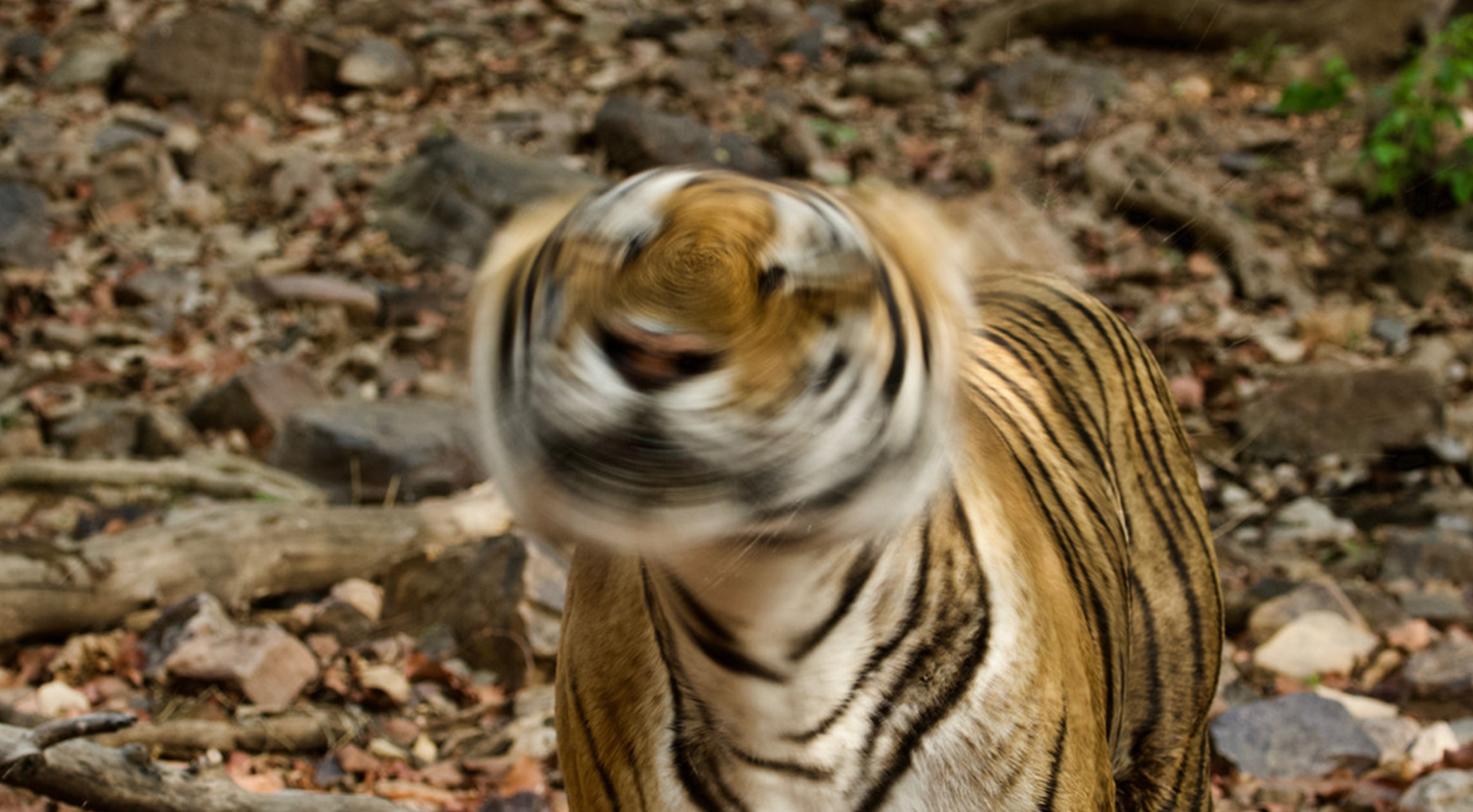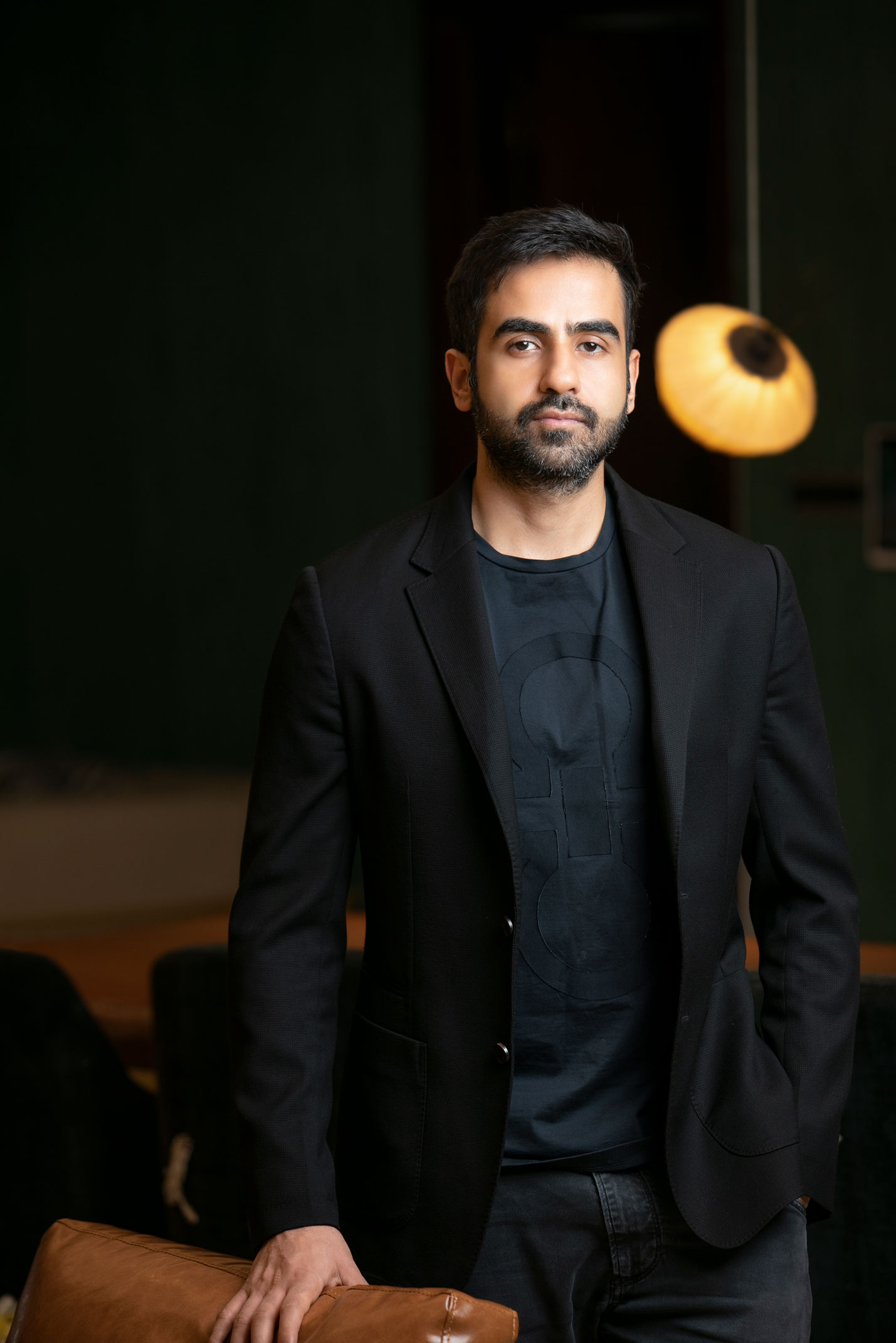As the latest and fifteenth edition of the India Art Fair comes to a close, I am more certain than ever that this is the year for young artists to shine and move ahead at a steady pace in their journeys.
Opposed to the usual ‘art fair scenes’, this year I interacted with a whole range of young artists making their way into the art fair through their sheer talent.
Here’s a list of artists and their works you must follow and watch out for as they make waves.
Thamshangpha ‘Merci’ Maku hails from Chandel in Manipur and is currently residing in Baroda, Gujarat. Reflecting on his early years, Merci recalls, “In my youth, drawing portraits of my friends during our gatherings was a natural, effortless activity for me.” This casual exercise from his youth has now evolved into a deep, almost sentimental connection with art, as he finds himself constantly engrossed in it after spending nearly ten years away from his homeland. His workshop is brimming with creative pursuits, ranging from sketches to bamboo weaving and collages, all showcasing the developmental phases of his renowned artwork, sculptures, and performances.
Merci reminisces about his childhood spent in the picturesque hills of Manipur, adjacent to Myanmar, within a Naga tribal community. He nostalgically recalls, “It felt like living in paradise, where our days were spent swimming in rivers without a care in the world about returning home.” However, his memories are tinged with complexity over time, acknowledging the ever-present fear of conflict and violence in his homeland.
‘Why My Karap Mourns’, Installation,
Canvas and ink.
Arpita Akhanda, engages in a broad spectrum of mediums, encompassing paper weavings, photography, performance art, installations, drawings, and video pieces. Originating from a family deeply affected by the trauma of displacement and forced migration during the Partition of 1947, her work delves into the connections between contemporary and historical trauma by exploring intergenerational memories/knowledge systems, inherited family archives, and the quest for a sense of home. Describing her body as a “memory collector” or a post-memorial site, she approaches the past not through direct recall but through recreation, imaginative investment, and projection, aiming to comprehend how the body retains and conveys colonial and postcolonial narratives across generations. Performative photography is at the heart of her artistic expression. Utilising mise-en-scène, she embodies various personas, drawing from both familiar and unknown figures found in her paternal grandfather’s photo albums, which dates back to the partition of India. Her grandfather, a freedom fighter, artist, and passionate photographer, managed to save his photographs and camera when fleeing from East Pakistan (now Bangladesh) to India over seventy-five years ago. These artefacts, a critical component of the family’s archives, inspire her exploration of what constitutes ‘homeland.’ Performance is used as a method to unearth, examine, and re engage with both institutional and personal histories.
Body of water ( I & II ),
Photo-performance and maps of rivers,
16.5 X 12 in
Haroun Hayward, a distinguished painter based in London, infuses his art with a rich blend of influences from his family history, his mother’s Pakistani rugs, graffiti culture of North London, and Acid House music from Chicago. His work, characterised by vibrant abstract forms on large wooden panels, reflects his multicultural background, creating visual rhythms akin to music. Hayward’s process, showcased in a documentary film, reveals his use of oil paints, sticks, scalpels, and brushes to craft these intricate patterns. Hayward’s daily life revolves around his home studio, where inspiration strikes him post-morning run and coffee, allowing for immediate creativity. His studio doubles as a sanctuary filled with diverse books and textiles from around the world, fueling his artistic vision. Educated at Goldsmiths University (MFA) and Brighton University (BA in Fine Art, Painting), with an exchange at Nagoya University of Arts in Japan, Hayward has also been recognized with an artist residency in Mallorca, Spain. His art has been displayed in numerous exhibitions, including solo shows like “Too Nice, Play It Twice” and “Dance Mania,” and group exhibitions across the globe. Beyond his practice, he contributes to the academic and mentoring spheres as an Associate Lecturer at Brighton University and a mentor at The New Art School in London, underscoring his commitment to the art community.
Cosmic Egg, Night Drive Through Babylon (Grey),
2020 Oil paint, oil pastel, oil bar and gesso on wood panel,
94 x 63.4 cm.
Ashna Malik, is a multidisciplinary artist who received her BFA in 2020 from Savannah College of Art and Design. She uses a combination of traditional and digital media to investigate ideas of perception, distortion, immersion and experience. Currently based in New Delhi, she has exhibited her work and is included in private collections in the United States, France and India. She most recently, showed at the 15th edition of India Art Fair and had her solo show ‘Lines of Inquiry’ at Method Kala Godha. She has collaborated with brands like Johnny Walker at Lollapalooza, La Marzocco, Budwierser, SCAD and taken workshops at Kiran Nadar Museum of Art. Through paintings and interactive projections, Malik aims to have the viewer question their limited perception and understanding of reality through stimulating visuals. Using a combination of digital and traditional media, Malik pushes boundaries and provides the viewer with an encapsulating experience. Dynamic lines and vibrant colours create movement and distortion through optical play challenging the viewer’s perception of what they see and understand.
Distort,
Variable sizes.
Tito Stanley, Born in Abu Dhabi in 1994 to Keralite parents, Tito Stanley S J relocated to India in 2000. He completed his painting major at the College of Fine Arts, Thiruvananthapuram, in 2019. Stanley’s early life was marked by the experience of navigating between two distinct cultures: the UAE, where he was born, and Kerala, his ancestral home. This cross-cultural upbringing has significantly influenced his evolving artistic expression, providing a unique perspective that permeates his work. Stanley’s art is characterized by a distinctive gaze that captures feelings of isolation, alienation, and the sense of being an outsider. However, it is through this very gaze—sarcastic, allegorical, and observant—that Stanley brings a fresh and unique contribution to contemporary painting in Kerala and beyond. His approach allows him to symbolically or literally place himself within his paintings, even as he critiques the culture from an outsider’s viewpoint. Utilizing this method, he exposes the absurdities within societal norms and political ideologies, striving for a reconciliation of sorts.
‘The Fire and the Death’,
Oil on linen canvas,
6 feet x 6 ft.
Raihan Rajiv Vadra is a 23 year old visual and installation artist hailing from the capital. Navigating an avid documentation journey since a young age of 10, Raihan’s lens focuses on wildlife, street and commercial photography. 2021 marked Vadra’s first show ‘Dark Perception’ exploring freedom of imagination. A common theme in Vadra’s work is perspective, from his latest exhibit ‘Upamana’, one can round traces at many points of the exhibit where the artist challenges accepted reality of everyday life. With floors projecting sky from finessed light boxes to birds at the top, Vadra posed a reality upon his viewers asking them to re-evaluate their life long learning, only to explore the unexplored. Inference and comparison; the two dualities catered to the extension of Raihan’s show Anumana and Upamana. Using immersive installations and evocative photographs, Anumana creates the path of choice and no choice, both exploring the reaction of the human mind to the idea of choice and the idea of compulsion. A continuing conversation, the artist’s learning curve is reflected in the progression of his work over the years.
Wildlife Collection,
Photography.
Arvind Sundar’s work speaks to the construct of spiritual and physical connectedness outlined in geometry and systems. Unfolding experiments of a modernist grid, to convey findings as a 20th century contemporary artist. The golden spiral, Fibonacci spirals and orthogonal projections – became areas of interest for Sundar’s work. The consistency that mathematics lends to the art world is celebrated throughout the artist’s practice. His most recent work ‘Blueprints for Impossible Structures’ is innately rooted in logic. The drawings, through their linear quality, lingers between the possibility and the impossibility of forms existing in the third dimension, while experimenting, testing and pushing boundaries of subject matter. Vladimir Tatlin’s blueprint drawings and his ingenuity can be traced as an undercurrent in Sundar’s work. Challenging set systems with following patterns of non-linear subject approach makes artist’s work stand out and offers a refreshing perspective with a sense of definition in the ever-subjective art. Arvind now aims to fair out into the world of sacred geometry and production of well informed decisions can now be traced through his work. A refreshing breather.
Blueprints to Impossible Structure,
Drawing.
Jasjyot Singh Hans alternates between the idea of longing and sense of belonging. Playing the field in neon with varied subjects of fashion, music and pop-culture the artist draws a bridge between the past and present while reflecting on the expedition of relevant reality. A background in animation film design from National Institute of Design and Masters in illustration practice at the Maryland Institute College of Art, Baltimore fuels Singh Hans’s creative journey. Main themes in the artist’s work revolve around body image, sexuality and self love. Evolving nature of society and growing acceptance toward fluidity of identity helps the information system grow contributing to the awareness of cause and artist. Beauty in diversity became a mantra for Jasjyot, as he folded upon the multiplicity available to him from the start onlooking his family dynamics. A portfolio of varied media, ranging from print, zine and pen on paper illustrations, Jasjyot’s work offers a commendation on variety media control.
Sit Properly,
Pencil and ink on paper.
Words by Shrey Sethi.
Image courtesy Featured Artist.














